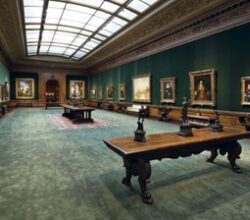
A Light Touch in the Frick Expansion
Justin Davidson | Curbed | 25th April 2025
New York’s Frick Collection is beloved for its masterpiece-laden art that is housed in an opulent Gilded-Age mansion museum. After five years of renovation, it is verdict time. Where new spaces have been created, “the scars don’t show”. Old and new have been blended deftly, getting “the richest result from the smallest betrayal”. With its beautiful wood and brass finishes, silk and wool wall coverings and gorgeous marble, The Frick remains “a temple to the tangible”. The writer’s verdict – “phew”.




